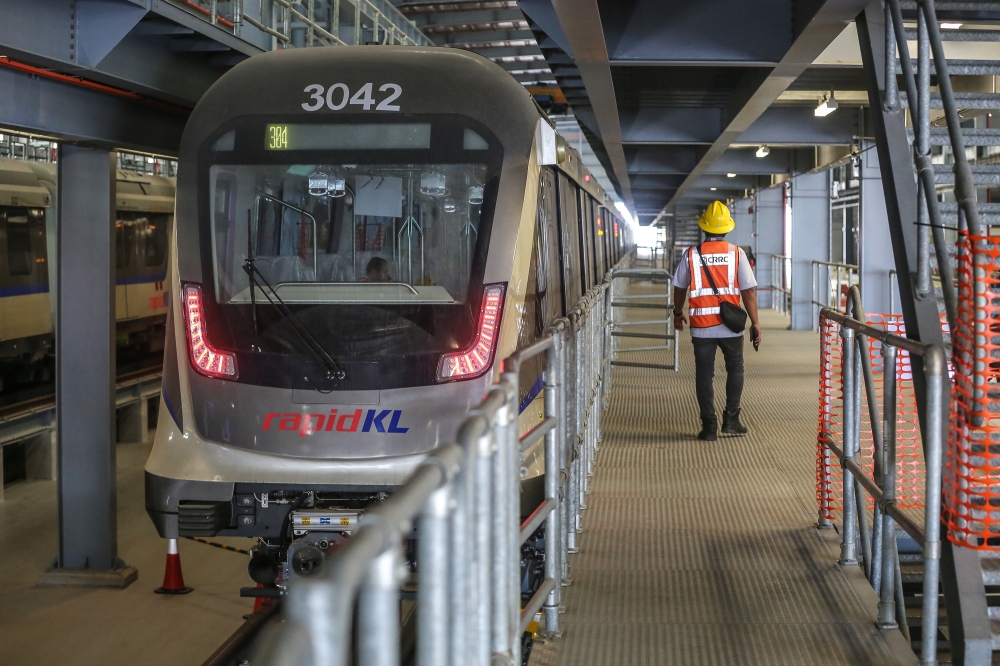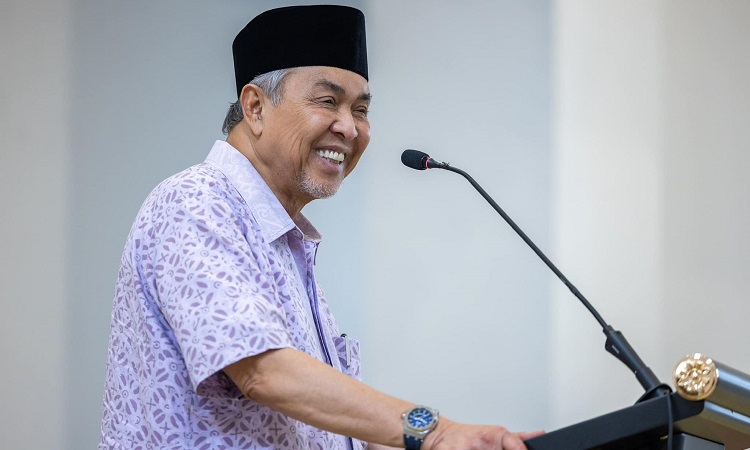KUALA LUMPUR, April 23 — Come second half of 2025, public transport enthusiasts and Malaysians will be able to look forward to the scheduled completion of several major transportation infrastructure projects nationwide.
Among those slated for completion and operation this year are the LRT Shah Alam Line (LRT3) and the Gemas-Johor Baru Electrified Double-Track (EDTP) rail project.
Malay Mail takes a look at these anticipated public rail infrastructure projects and how they will serve for the betterment of the public in terms of transport network interconnectivity.
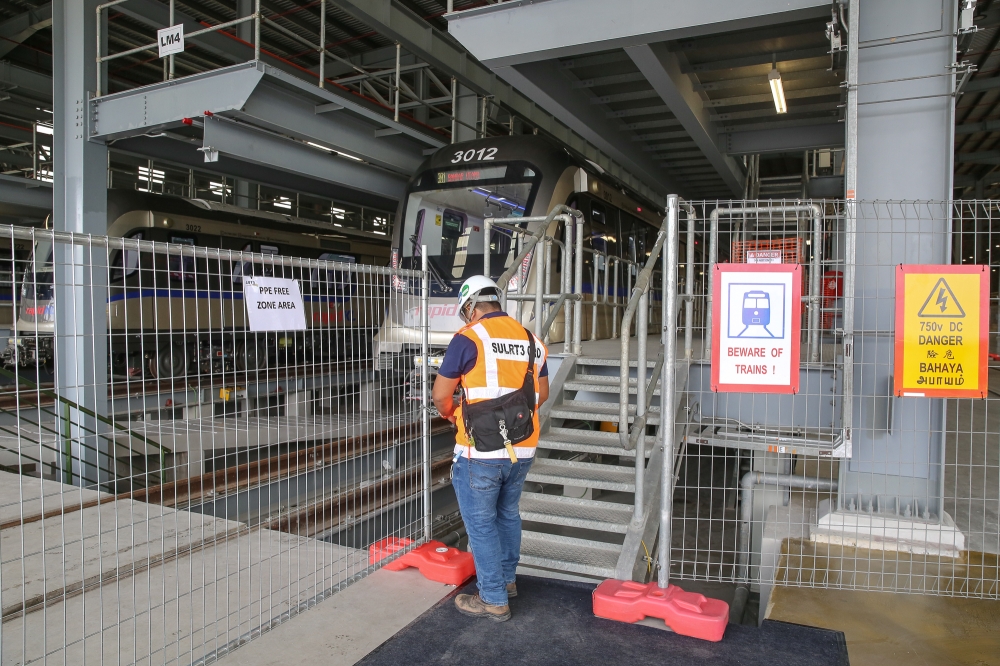
A general view at LRT3 Johan Setia Depot in Klang July 4, 2023. — Picture by Yusof Mat Isa
LRT3
Announced under Budget 2015 and launched in 2016, the LRT3 project was initially designed with 26 stations (25 at present) to serve the western corridor of Greater Klang Valley with a total development cost initially set at RM9 billion, revised to RM16.6 billion in 2018 and RM21.33 billion by 2025.
Spanning 37.8 kilometres (including 2 kilometres of underground tunnel) in length, the fully automated and driverless rail system starts at Bandar Utama and ends at Johan Setia with interchanges at Bandar Utama (MRT Sungai Buloh-Kajang Line) and Glenmarie (LRT Kelana Jaya Line).
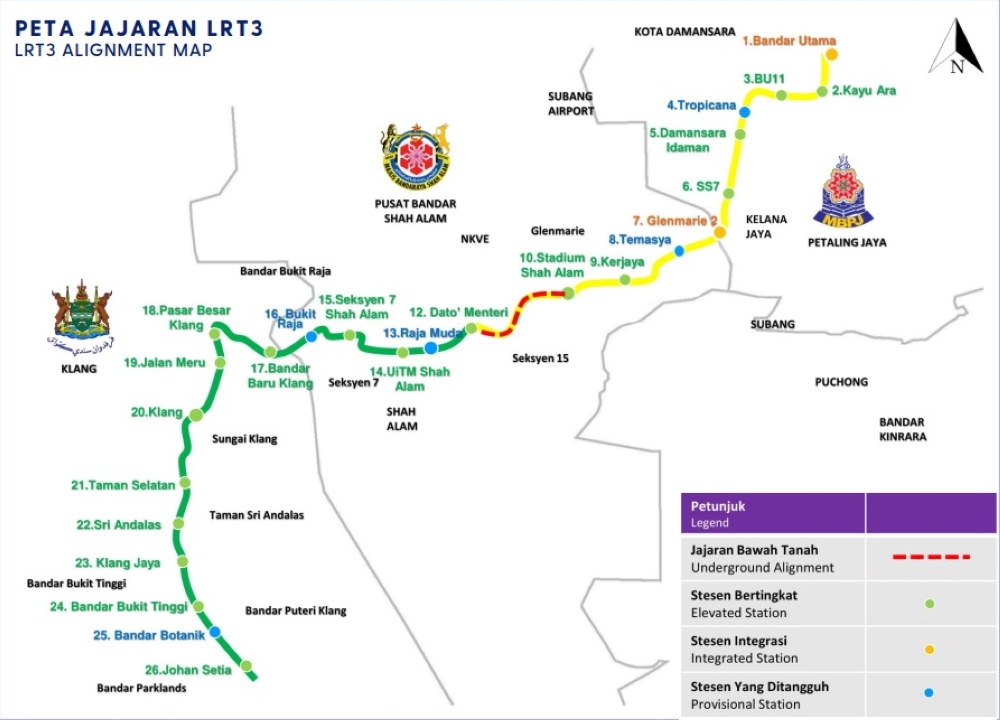
The LRT3 alignment spans 37.8km in length from Bandar Utama, Petaling Jaya to Johan Setia, Klang. — Picture via LRT3.com.my
Forming part of the Klang Valley Integrated Transit System once completed, the LRT3 Line is expected to serve several high-density areas such as Bandar Utama, Shah Alam and Klang — accommodating up to 18,630 commuters per hour per direction.
It is expected to benefit some two million residents along its alignment — especially those traveling between Petaling Jaya and Klang — with the aim of alleviating traffic congestion and boosting economic growth around the stations.
Due for operation: September 30
Gemas-JB EDTP
The Gemas-JB EDTP is a 192-kilometre electric train service project aimed at upgrading and complementing KTM’s Electric Train Service (ETS) which runs from Padang Besar in Perlis to Gemas in Negeri Sembilan.
The Gemas-JB EDTP spans four major districts in Johor, namely Segamat, Kluang, Kulai and Johor Baru, with 11 stops along its route.
Announced in 2011 as part of Malaysia’s EDTP, construction for the RM9.5 billion Gemas-JB EDTP began in 2018 and was initially scheduled for completion in October 2021.
However, challenges during the Covid-19 pandemic and land acquisition issues caused setbacks.
Once completed, the project would facilitate trade services between Kuala Lumpur and Johor Baru, positioning it as a key catalyst for enhancing connectivity and stimulating economic growth in the region.
Freight transport between Malaysia’s two largest ports — Port Klang and Tanjung Pelepas — is also expected to be enhanced.
It is anticipated the project could accommodate some 3,000 daily passengers on the JB-KL route; including reducing commute time from JB to KL to four and a half hours from the previous seven hours by diesel train.
Due for operation: August 2025
Special mentions: JB-Singapore Rapid Transit System Link (RTS Link)
While not slated for completion this year, the RTS Link has nevertheless made significant progress with track installation and construction now more than 65 per cent completed.
The RTS Link is an international cross-border railway shuttle link consisting of two stations — Bukit Chagar in JB and Woodlands North in Singapore.
Approximately 4 kilometres in length, the RTS Link aims to provide an alternative means of transportation that will help alleviate the congestion at immigration checkpoints for both countries.
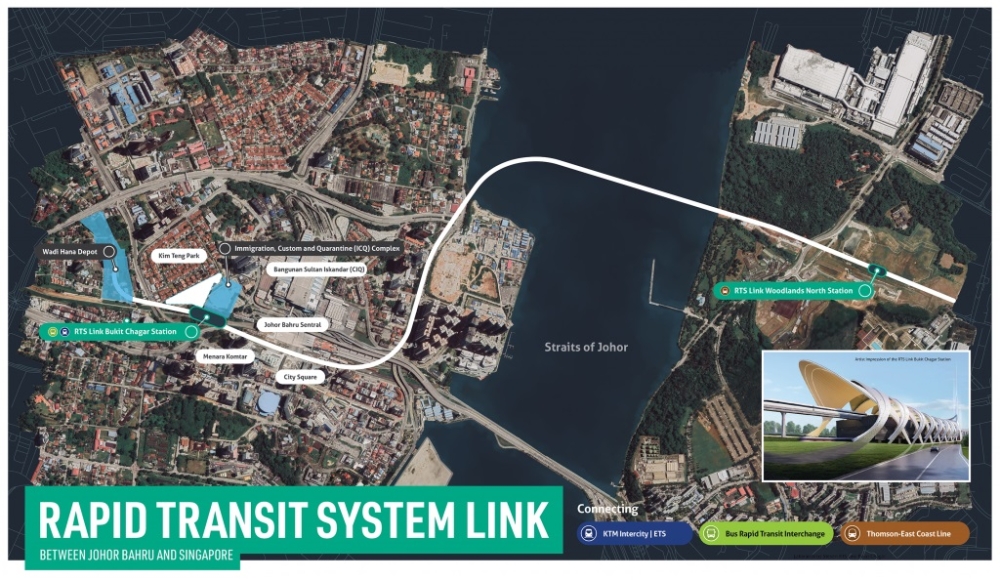
The link will be a modern Light Rail Transit (LRT) system that will provide a high volume, fast and efficient transportation system between the two stations. — Picture courtesy of MRT Corp
The link will have a peak capacity of 10,000 passengers per hour per direction and an expected ridership of about 40,000 passengers per day in a six-minute train journey.
As an international link between Malaysia and Singapore, the RTS Link includes the building of new co-located Immigration, Customs and Quarantine (ICQ) facilities at Bukit Chagar and Customs, Immigration and Quarantine (CIQ) Woodlands North respectively.
This means the entire immigration process of leaving and entering both countries will be completed at the departing station, and arriving passengers need not go through border crossing formalities again.
Due for operation: January 2027

The EMU train design and ECRL logo are pictured at Zenith Hotel in Putrajaya December 18, 2024. — Picture by Yusof Mat Isa
Special mentions: East Coast Rail Link (ECRL)
Although not slated for completion until December 2026, the 665-km double-track rail project has nevertheless completed excavation works for 38 tunnels along its rail alignment two months ahead of schedule.
This comes after the ECRL made two tunnel breakthroughs in Selangor this month — the Serendah 1 Tunnel (3.5 kilometres) and the Rawang-Bestari Jaya Tunnel (189 metres) — putting it on track to achieve its target of 41 tunnel breakthroughs by the third quarter of 2025.
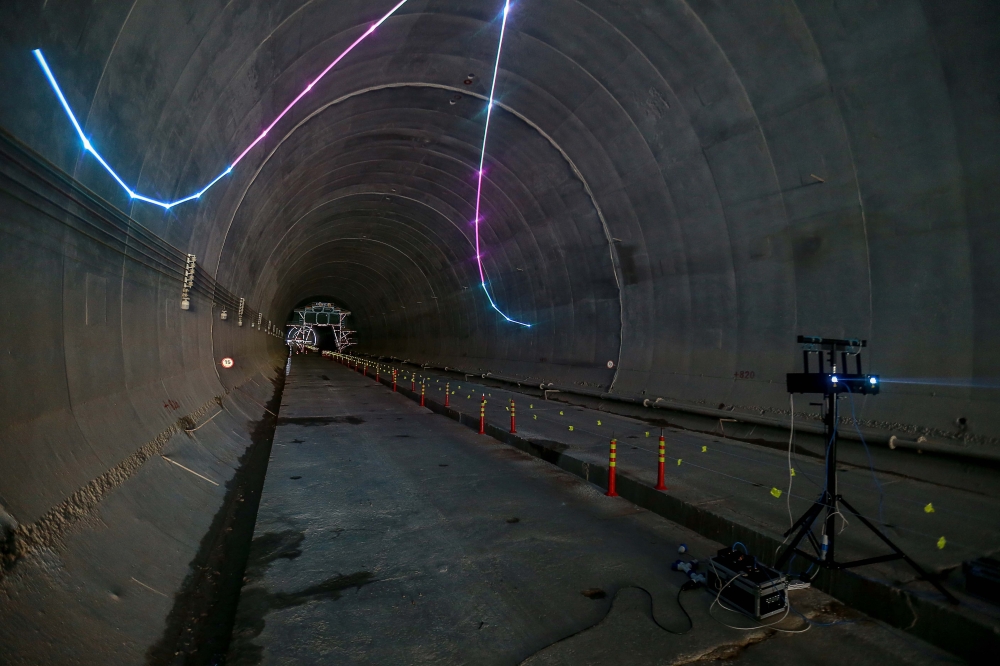
A general view of the tunnel which can be seen during the ECRL Gombak Tunnel Breakthrough Ceremony here at Gombak. — Picture by Sayuti Zainudin
With these two breakthroughs, only three tunnels remain under excavation: the twin-bore Genting Tunnel (16.39 kilometres) and the Serendah 2 Tunnel (9.85 kilometres).
It was reported that the Genting Tunnel is expected to achieve breakthrough in mid-2025, while the Serendah 2 Tunnel is targeted for breakthrough in the third quarter of 2025.
The ECRL is separated into two phases — from Kota Baru in Kelantan to the Gombak Integrated Terminal (TBG) in Selangor (Phase 1) and Gombak with Port Klang (Phase 2).
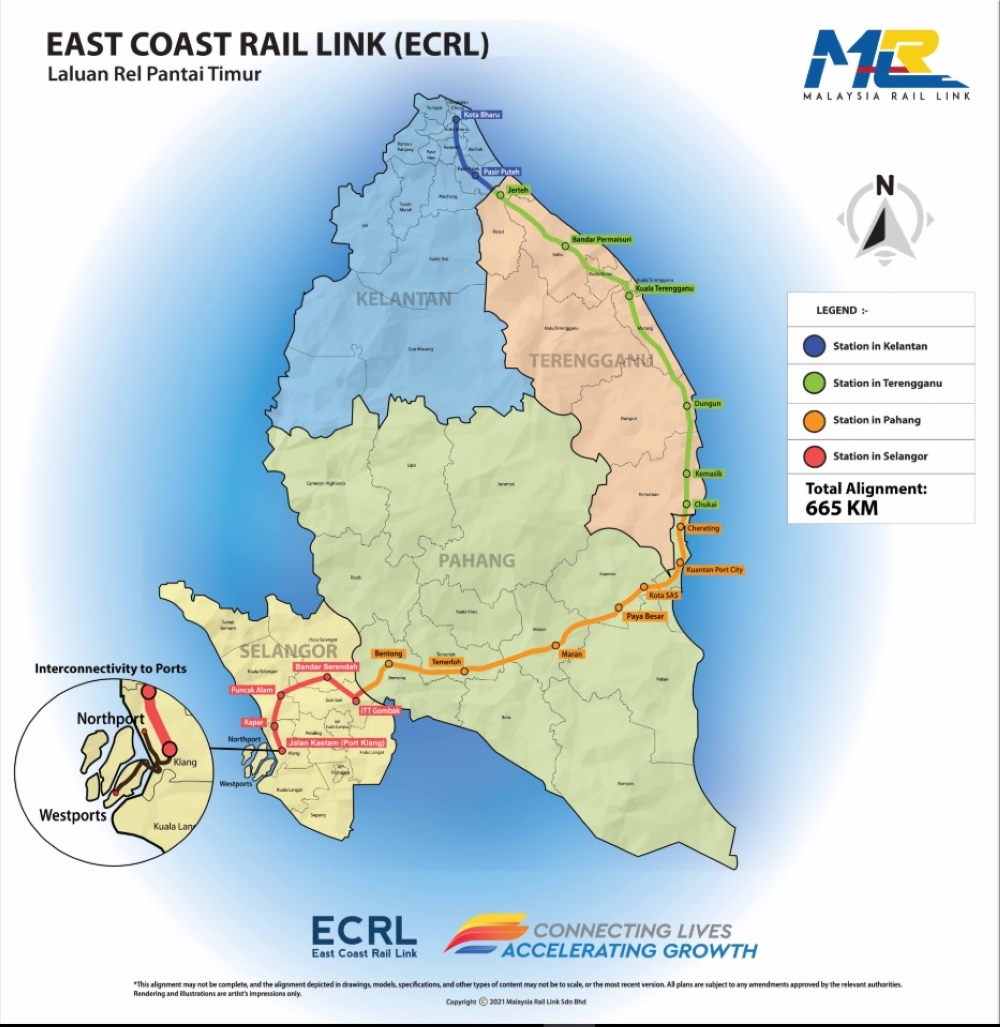
The ECRL project involves the construction of 41 tunnels with a total length of approximately 69 kilometres along its route. — Picture courtesy of Malaysia Rail Link Sdn Bhd
Once completed, the ECRL will enable travel from Kota Baru to TBG in four hours at a speed of up to160 kilometres per hour compared to approximately seven hours by road transport and provide much improved connectivity throughout the East Coast region to the West Coast.
Due for operation: Phase 1 is scheduled for completion by December 2026 with operations set for January 2027 onwards; Phase 2 is expected to be completed by December 2027 and fully operational by January 2028.


